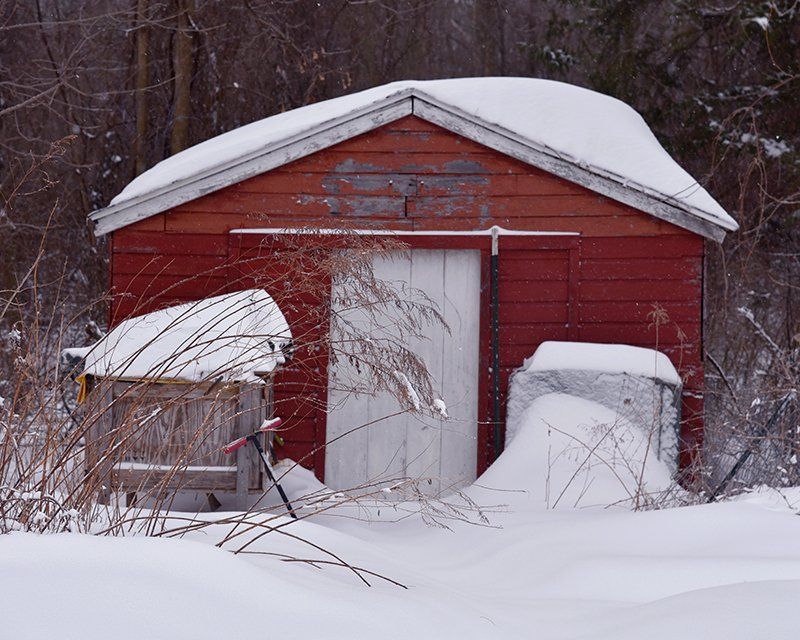The Essential Geologist's Day Pack: What To Bring to Your Field Site
A typical Paleontologist's Day Pack is not a light load.
Paleontologists are responsible for collecting and documenting every rock or fossil they find, as well as studying the terrain in order to make sense of it all. Paleontologists also have to be prepared for any emergency or bad weather that might come their way! So what does this mean? It means that you need to pack carefully - but don't worry, we've got your back. In this blog post, we'll talk about the essential gear for field work and give tips on how to pack efficiently without forgetting anything important.
Is it Paleontology or Geology?
Though paleontology as a science deals with animals - long dead and typically extinct animals, but animals nonetheless - it is regarded as a subdiscipline of geology. Geologists study the rocks and fossils found of the Earth. Thus, geology is a broader discipline that studies everything from mountains to human-induced phenomena such as mining activities or waste disposal sites. Paleontology restricts its focus to the fossils and remains of animals. Geology is a more general discipline, while paleontology focuses on just one aspect: fossilized or otherwise preserved evidence from ancient life that has since disappeared.
Because of the intimate relationship between the two sciences, the necessary equipment for field work is essentially the same.
Hiking Gear
First and foremost, field work involves hiking. It's not geology without hiking. You should have at least one lightweight backpack that can fit everything you'll need for the day (or days).
Backpack
Where else will you put your lunch and all those rock samples you’re going to collect?
I am a big advocate of the style of pack that includes a water bladder with hose and bite valve. One of the greatest risks we face is dehydration, and the water bladder will help you to drink as much water as possible without having to stop for a minute.
Field Vest
Another convenient way to carry gear is in a multi-pocketed vest of sorts. There are special geologist vests out there but a basic fishing vest will often suffice.
Water
It doesn’t matter how you do it, but you must bring plenty of water. For the work I do, I ensure I have the capacity to carry at least a gallon. I never start the day with less than a liter (~ a quart). Fancy water bladders like I mention above are great, but I also still carry a couple of liter water bottles just in case.
Food
This is another critical thing that needs to go into any field gear. In case of an emergency, you may be stranded for a day or more and need to rely on your own supplies. Or, if you're like me, hypoglycemia can sneak up on you and before you know it, your blood sugar is bottoming out. I always carry a couple of energy bars or other snacks.
Safety Gear
There are risks associated with field work. Water and food are necessary for survival, but there are other threats. Being well-prepared will thwart most hazards.
First Aid Kit
It doesn’t need to be anything huge, but cuts and insect bites happen quite a lot. Bring something for headaches. Anything you need for allergies.
Sunscreen
Sunscreen is a must-have for your day pack. Geologists and Paleontologists typically spend their days in the sun, so the risk of heat exhaustion, sunburn, or worse is very high.
Insect Spray
Mosquitos like paleontologists. So do ticks. And so does the Lyme disease they may carry with them. Lyme disease, or serious reactions to other insect bites can leave a paleontologist unable to work. Bring insect spray.
Rain Gear
There are few things as miserable as getting soaked and cold, trudging back to camp in the mud. What's worse though is if you equipment gets wet. Geologists and paleontologists are carrying a lot of electronics these days, so when it rains, gear must be protected. Even a simple poncho that can slip over your backpack is better than nothing.
Documentation Gear
When doing science in the field you have to examine and document everything you find. Here are the basics necessary.
Notebook
If you don’t write it down, it didn’t happen. Notes are important, so that people can follow in your footsteps if they want to continue your research when you’re not there. The best notebooks are made with special paper that does not fall apart when wet.
Pens and Pencils
There are some arguments about which is better, pens or pencils. I carry both as well as permanent markers. Pens are good for field notes, but don't work well under wet conditions and could dry out at an inconvenient moment. Pencils are more reliable but can be erased and modified later.
Hand Lens(es)
Especially now, since my eyes have started getting bad, I need the hand lenses to help me see the little things that could matter a lot. You can find a 10X lens for less than $20. Higher magnification lenses get substantially more expensive, but allow you to discern even smaller details that could be critical observations to record in your notebook.
Dilute Hydrochloric Acid
This one often surprizes people. Why would you carry hydrochloric acid in the field? It turns out that this is a powerful tool for determine what minerals a rock or fossil contains. Rocks and fossils with calcium carbonate (AKA calcite) 'fizz' when acid is placed on them.
This is especially important if you're a geochemist like me and need to know if there is carbonate in a rock. It is carbonate that I typically analyze and if there's none in a rock, I won't waste my time preparing a sample.
Camera (and Scale Bar)
It's important to photographically document everything as you're working. Back in the days of film photography, this was more difficult because you had to ration your shots so as to not run out of film. Today, digital photography means that you never have to worry about running out of pictures or film. Unfortunately, digital cameras also require batteries, so there's always a risk of them dying an a bad time.
An important thing that paleontologists have to include in any photos they take is something to indicate scale. This is often a lens cap or a coin, but an actual scale bar is preferred. For photos of big things, like whole outcrops, a person is usually included in the shot.
Maps (and Clipboard)
I feel like the notion of carrying a physical map is falling by the wayside, but there are some really great reasons to carry a paper map. For one, a paper map doesn't require batteries. And it doesn't run the risk of running out of storage space.
Compass
Carrying a compass is also perhaps "old school," but like a paper map, a compass works day or night and doesn't require electricity. It's also a handy way to orient yourself if you're unsure of which way you're going. Finding North in flat terrain in the middle of the day can be difficult.
GPS
When I started doing paleontology, GPS was novel technology. And it was decidedly unreliable and inaccurate. At the time, paper maps and magnetic compasses were the only way to navigate. If I was out in the field, I could be sure that my compass and map were accurate.
Nowadays geologists rely on GPS for both navigation and mapping, which is great and convenient - unless the battery dies or the files are corrupted.
So a word of caution: Use the GPS, but write everything down too!
Collection Gear
Collecting rocks and fossils requires tools. Geologists also generally carry a hammer of some sort for breaking rock or fossils out of the ground. Collecting also requires a means to package and carry the samples, without losing track of which is which. Geologists have been known to use everything from plastic bags and paper envelopes, to more expensive but higher quality containers like Tupperware.
Basic Preparation Tools
In paleontology-speak, "preparation" means removing the rock or sediment from around a fossil. There are a variety of tools and techniques that can be used for this. Most people think of trowels, which are good, but we also use other implements like dental picks, small screwdrivers and other point tools.
Hammer(s)
I have many hammers that I may or may not carry in the field. The most basic hammer is a rock hammer, with a flat surface on one end and a point on the other. My favorite hammer to carry is a masonry hammer, that has a flat, chisel shaped end instead of a point. This is helpful for trenching, an important activity in the extraction of fossils.
Other hammers I keep handy include sledge hammers and pick-axes, for breaking extremely hard rock or for digging deep holes. Occasionally, a pry bar is used. These aren't things I typically carry if I'm going on a long hike, but I have been known to schlep a small pick-axe (called a hoe-pick) for miles and miles.
Toilet Paper
Yes. Don’t forget this. It’s good for toilet-y things, but is also an important component of your field sampling kit. Sometimes called PT for ‘paleo tissue.’ This stuff is vital for wrapping fragile specimens, before putting them into sample bags.
Because toilet paper turns to mud when it gets wet, it is highly highly recommended that it is stored in a sealed plastic bag in your backpack. I can assure you that at some point your water bottle is going to leak.
Sample containers - bags, bottles, and boxes
The basic sample container for geologists and paleontologists are plastic resealable bags, like quart-sized food storage bags. I keep many different styles and sizes in my backpack and use them to collect both fossils and rock or sediment samples. For small fossils, bottles are also great. Isolated teeth can be stashed in an old prescription bottle with some toilet paper so that we know that they won't get crushed in our backpack.
Permanent Marker
It's all for naught if you don't label your samples. When you collect samples, you carefully record the GPS coordinates, and make all appropriate notes in your notebook. Then you assign a sample number to your sample and somehow associate that number with the fossil or rock that you've collected. With a permanent marker, you can write directly on the rock, or on the sample bag, or on a paper label that goes into the bag.
Don't Leave Home Without
These are two things that you basically don't want to walk away from your vehicle without.
Cell Phone
Not so long ago, the cell phone was a convenience that we could tuck into our backpacks just in case. Today, they're an indispensable tool to the geologist and paleontologist. Geologists and paleontologists use them to take pictures, texts, emails, navigate the terrain with GPS or even just call someone back in case of an emergency.
Duct Tape
Because you never know when you’re going to tear your pants. It happens. Trust me.





















